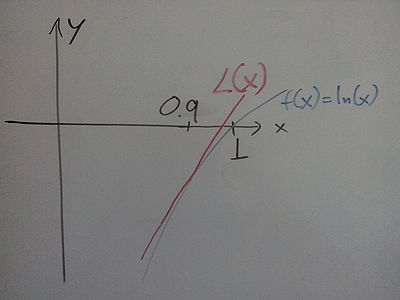Science:Math Exam Resources/Courses/MATH110/April 2014/Question 09 (b)
{{#incat:MER QGQ flag|{{#incat:MER QGH flag|{{#incat:MER QGS flag|}}}}}}
• Q1 (a) • Q1 (b) • Q1 (c) • Q1 (d) • Q2 (a) • Q2 (b) • Q2 (c) • Q3 (a) • Q3 (b) • Q3 (c) • Q3 (d) • Q3 (e) • Q3 (f) • Q3 (g) • Q4 • Q5 • Q6 • Q7 (a) • Q7 (b) • Q8 (a) • Q8 (b) • Q9 (a) • Q9 (b) • Q9 (c) •
Question 09 (b) |
|---|
|
Is your answer in part (a) an overestimate, an underestimate, or exactly equal to, the actual value of ? Justify your answer. |
|
Make sure you understand the problem fully: What is the question asking you to do? Are there specific conditions or constraints that you should take note of? How will you know if your answer is correct from your work only? Can you rephrase the question in your own words in a way that makes sense to you? |
|
If you are stuck, check the hints below. Read the first one and consider it for a while. Does it give you a new idea on how to approach the problem? If so, try it! If after a while you are still stuck, go for the next hint. |
Hint 1 |
|---|
|
The linear approximation is the tangent line to the function at . |
Hint 2 |
|---|
|
At the point , is the function above, below, or equal to the tangent line? |
|
Checking a solution serves two purposes: helping you if, after having used all the hints, you still are stuck on the problem; or if you have solved the problem and would like to check your work.
|
Solution |
|---|
|
To know whether the linear approximation is an over or underestimate we consider the second derivative at the point :
Since the function is concave down at this point, and hence the linear approximation is an overestimate of the . |
{{#incat:MER CT flag||
}}








